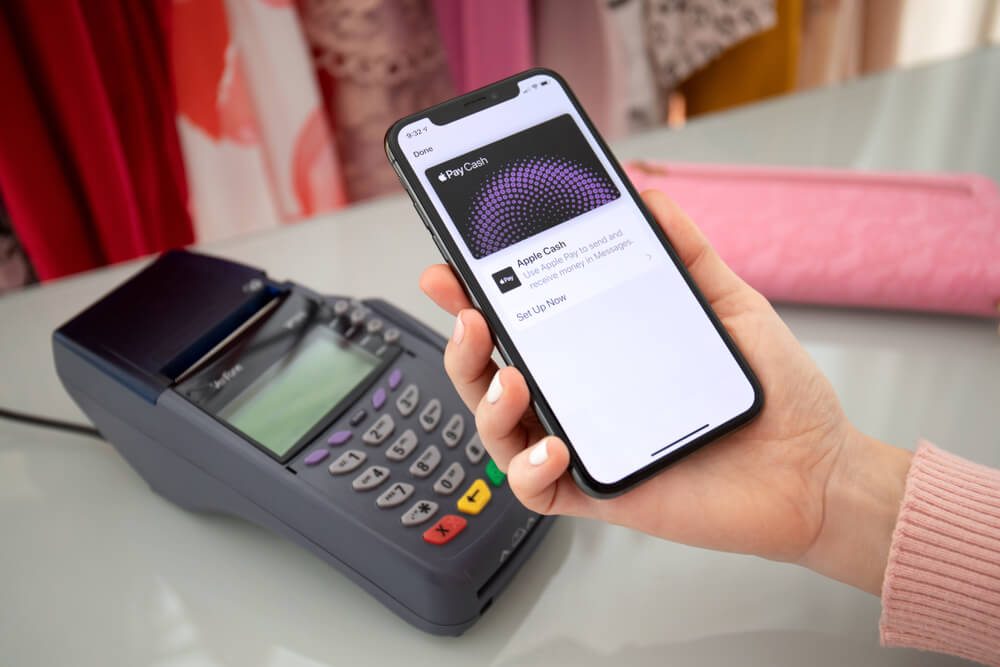In the past, I was pretty old school when it came to what I carried in my wallet.
It was a combination of various debit and credit cards, IDs, select reward cards and, of course, cash.
But I have started to come around to the 21st century and with that, digital currency.
You see, I’ve started to notice a trend when it comes to shopping.
This really came to light just the other day.
I was standing in line to pay for some items at a large convenience store chain when the person in front of me whipped out his iPhone to pay for his drinks and snacks rather than a card or cash.
He took his phone, hovered it over a reader, listened for a beep and went on his merry way.
That got me thinking: Maybe now is a good time for me to stop carrying cash and start using more digital currency.
I’ll explain why.
COVID-19 Has Changed How We Spend Money
On it was someone’s name and date from about two years before.
That came back to mind when I saw the man in front of me use his phone to pay for items, rather than cash or a card.
You see, what the name and date on that bill illustrated to me was how physical currency travels.
Bills and coins are in circulation for decades, with one bill being handled by thousands of different people all over the country over the course of time.
I then thought about that in terms of the coronavirus pandemic we are all going through right now.
Using physical cash means unless I have a freshly printed bill, I have no idea who touched that money — or where it’s been. With the spread of COVID-19, it’s possible someone with the virus could have handled that bill the cashier is getting ready to hand me.
Now I’m not a fearmonger by any stretch of the imagination, but the spread of the novel coronavirus has certainly gotten people thinking in terms of shifting to digital currency now more than ever.
Digital Payments Are on the Rise
While cash may be king when it comes to some investors’ portfolios, it is starting to lose its grasp as the primary source of payment for goods and services.
According to Banyan Hill Publishing’s Ian King, digital payments are expected to increase significantly over the next five years. Check out this chart examining the mobile point-of-sale payment growth in the U.S. and China:
As you can see, paying with your phone via apps like Apple Pay, Google Pay and others is quickly gaining steam.
Central Banks Leading the Digital Currency Charge
Most recently, central banks have taken a hard look at creating “central bank digital currencies,” or CBDCs.
“COVID-19 will be remembered by economic historians as the event that pushed CBDC development into top gear,” Bank for International Settlements Innovation Hub Head Benoit Coeure said.
You’ve already seen stories about China pushing a digital yuan. The U.S. also has considered a couple of different proposals for a digital dollar.
When this happens, people are going to jump on the digital currency bandwagon and there won’t be any stopping its progress as we eventually move to a cashless society.
The Takeaway
You’ll notice I haven’t mentioned the elephant in the room when it comes to digital currency: Bitcoin and Ethereum.
Moving to a cashless society could mean big things for the cryptocurrency market.
“You take a lot of friction out of converting your U.S. dollar or your Chinese yuan into some form of cryptocurrency,” King said. “Right now, if you have cash or a bank account there’s still a lot of friction.”
So while the move to digital currency could have a big benefit for the cryptocurrency market, it will certainly mean one thing:
I’ll be using my phone to pay for things at the convenience store instead of using cash. Be sure and check out our podcast featuring King, where we discuss a few of the myths and truths about crypto.
